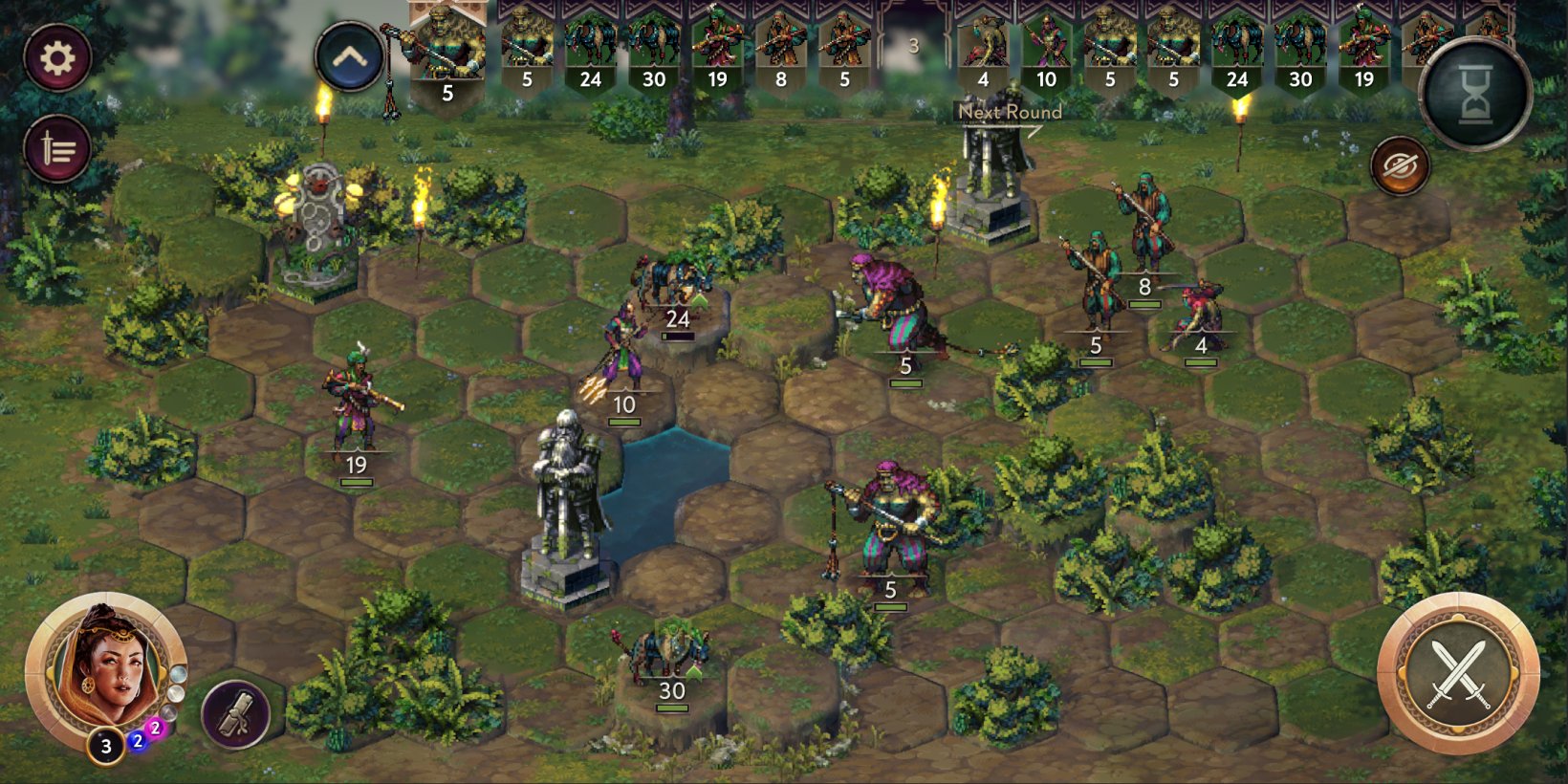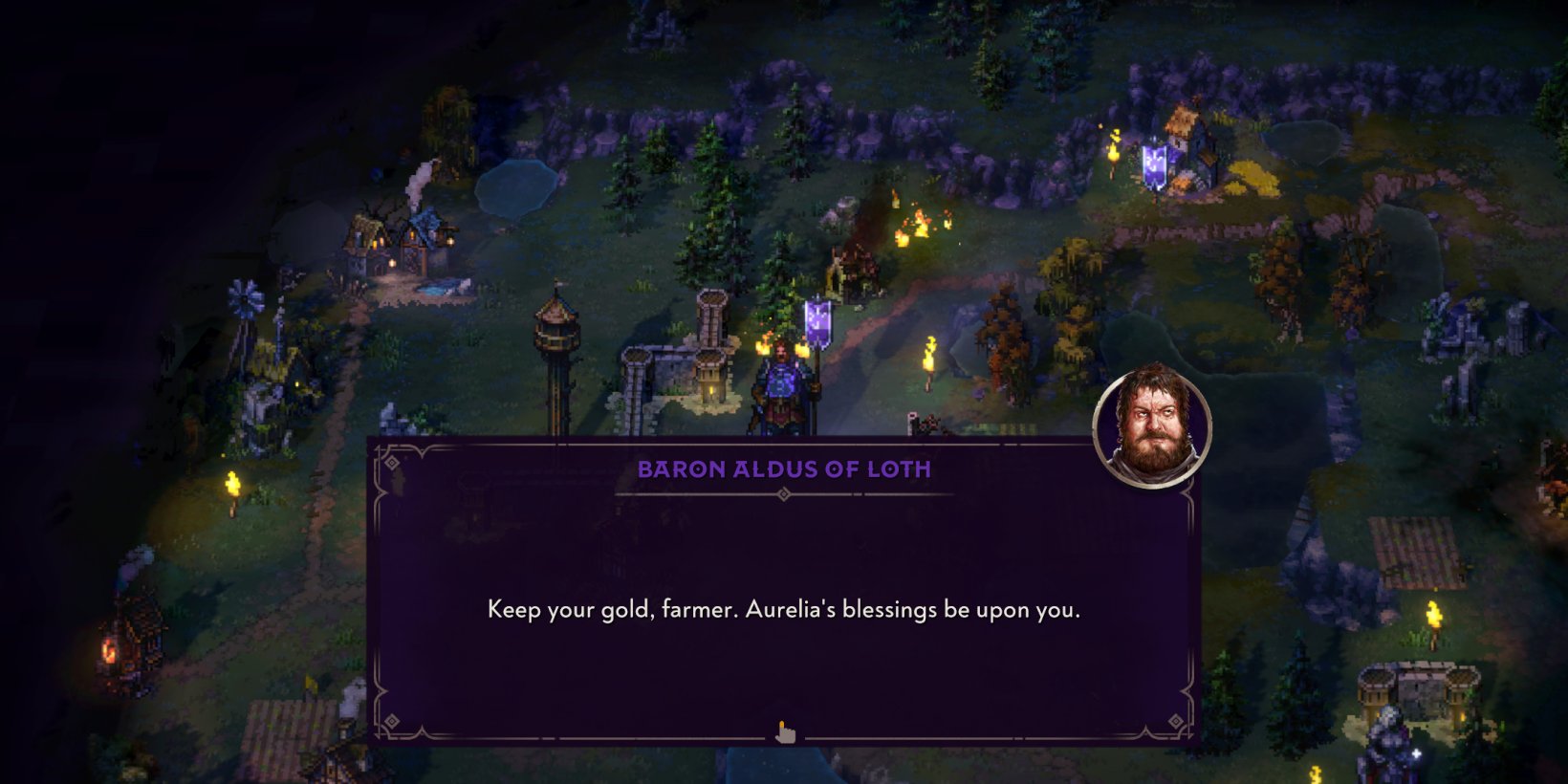- Four campaigns and a sturdy ‘conquest’ mode featuring random, challenge and prefab maps
- Solid UI design and basically a masterclass in mobile tooltip and heavy text management
- A perfect fit for fans of the genre, however perhaps a little hard to approach for those new to it
Songs of Conquest’s mobile port is exactly what the doctor ordered. The doctor, that is, of the long-overdue hardcore-strategy mobile renaissance.
It feels like after half a decade of premium games on mobile declining – not least in part due to efforts to try to save the spirit of early ‘mobile premium’ options – we’ve reached a point where games that people struggle to put down are finally being considered for mobile on a regular basis. It’s ironic, as mobile is arguably the one form that everybody has access to almost 100% of the time.

Songs of Conquest, for those who have completely slept on it since it was first announced, is a spiritual sequel to the incredibly popular Heroes of Might & Magic series. However, this isn’t simply picking up where the old series left off – at the time of its Early Access launch, HOMM had basically been dormant for seven years.
No, Songs of Conquest is exciting and feels like the start of something. Certainly, it has tactical combat and a degree of army construction. Certainly, you’ll build up that army through base development and point control. And, certainly, its moody Euro-fantasy feels a little familiar. However, everything feels juicy, dynamic and, dare I say it, cinematic.
Perfectly Polished Port
I’ll get to the meat and bones of it all in a minute, but what makes it sing is the fine garments and decorations that it wears, rather than the structure it’s built on. Every tile, interaction point and (contrasting in artwork) pixelated unit feels vastly more detailed (and in the case of units, animated) than they need to be. When you interact with points on the map or fell the final enemy in combat, camera control is wrestled from your grasp and the camera pulls in to highlight exactly what’s going on. It’s polish, Craftsmanship, attention to detail and polish. And, hey, the music’s pretty great too.
There are four, lengthy campaigns included, with each following different, interlinked factions. You’ll take charge of the noble, stubborn Arleon faction, the magic-forward, beastkin Rana faction, the mysterious, necromantic Barony of Loth, and the mercenary, technologist Barya. There’s no real weak spot when it comes to the depth of quality between them. Each is full of the same great writing, the same style of map control and the same variety of units. 
Everything in the mobile port feels incredibly intuitive beyond a couple of combat commands (which become a habit soon enough). One massive, and welcome refinement is having a toggle button on the UI, which then highlights all of the interaction points around the map (you’d normally have to hold down a key on KB+M controls).
This quickly addresses one of two major threats to games that have mixed art, dark settings and a big UI: Screen readability. Thankfully, a lot of care has gone into this, and while the text certainly feels like it could be larger at times, Songs of Conquest isn’t impossible to parse on a smaller phone screen. That said, I do wish that that interaction point toggle would stay on once turned on.
The same care of design can be seen in the combat UI, which, aside from a strangely placed end turn button (in the top right, rather than bottom right), is actually incredibly intuitive and shows that a lot of care has gone into making sure that everything that should have a tool-tip requires a second tap after presenting the information on the first.
The Nitty Gritty
Combat in Songs of Conquest can be a little on the tough side for newcomers. Unlike most strategy offerings, you’re not simply managing a small fistful of units, but instead managing stacks of them. This means you might have 1 of your strongest units in a stack, and next to them, a stack of 20 weaker units. This does add an additional layer of strategy to combat, where you’ll also be juggling abilities, spells, positioning and penalties/bonuses based on movements and positioning.
Army composition is managed by assigning units to a wielder – hero units which have RPG-style stats and have abilities and spells that can be used in combat – either through events, actions or the bases you’ll be setting up and moving between during scenarios.

Combat feels great. Enemy AI is smart, and wielders genuinely feel as though they have an effect on the outcome. You do need to pay attention, when not using the auto-resolve, as it doesn’t often take much for somebody to land a strong hit on one of your troop compositions, and numbers (and subsequently, capabilities) have to be restored outside of combat. Most battles rarely last longer than a few minutes, which actually makes Songs of Conquest pretty easy to squeeze an extra five minutes into here and there.
Conclusion
I’m a sucker for an in-depth strategy experience, especially one with a great campaign, and Songs of Conquest is exactly that. I genuinely hope that this is a sign of coming times and that we’ll start to see more teams bring over ‘heavier’ genres, rather than it simply being left to porting powerhouses like Feral Interactive to do the dance.
